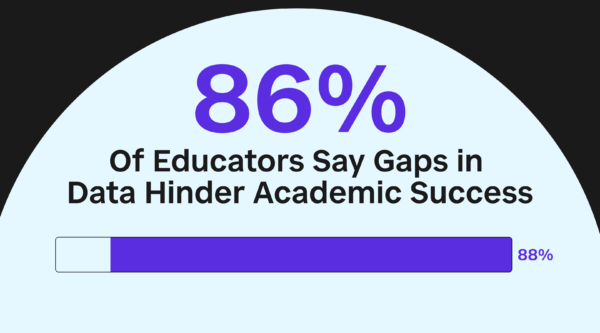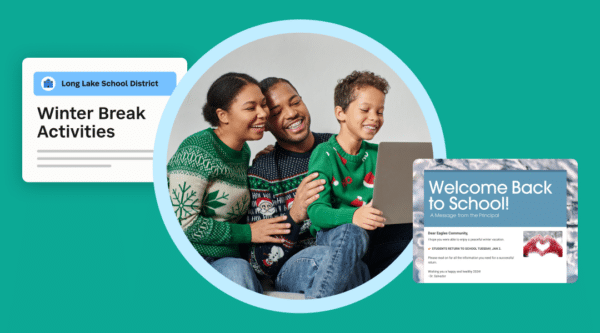
Featured Resource
Why Over Half of California School Districts Trust SchoolStatus
Read More >Join Mission: Attendance to reduce chronic absenteeism in 2025-26! >> Learn How <<





One of the key lessons we’ve learned in educational technology is that tools alone don’t create effective communication. True success happens when teachers and families are informed, empowered, and actively engaged. In recent years, we’ve seen teachers connect with nearly every family in their classrooms, gaining supportive volunteers and organizing more events than ever. So, how did they reach this level of family engagement?
After analyzing 100 highly engaged classrooms, we found five key elements that drive a successful family-teacher partnership: two-way communication, relationship building, family support, school-community involvement, and home-based learning. Consistent communication is a great place to start.
Yet, what messages should you share with families to foster this connection? While many teachers feel unsure about what to communicate, we’ve gathered 10 message ideas that can help build strong relationships with families and enhance student success.
Traditionally, communication from teachers often focused on behavioral or academic concerns. However, sending regular positive updates about a child’s achievements builds trust with families and fosters a positive school climate. Consider a weekly update highlighting a “Student of the Week” or celebrating a class achievement. Sharing these successes can create a welcoming atmosphere that encourages families to engage more fully.
Keeping families informed of significant learning moments gives them insight into the learning process and encourages supportive activities at home. Highlighting a “lightbulb moment” when a student grasps a difficult concept allows families to share in their child’s accomplishments. Teachers can also encourage families to create learning moments outside of school through storytelling, problem-solving, and letting children explore new ideas independently.
Sending a quick recap or sharing photos from a field trip helps families feel connected to school activities, especially when they can’t attend in person. A follow-up message with a few fun highlights or conversation starters allows families to engage their children about the experience.
Many families want to support their child’s learning but aren’t sure where to start. Sending home simple tips or resources tailored to current topics can make a big impact. For example, a short video or list of strategies to assist with a science project can empower families and improve student success. Read more on effective family involvement in education.
Families often struggle to get more than a “fine” or “okay” from their children about school. Sharing open-ended questions like “What was the most interesting part of your class today?” or “Who did you help today?” can give families tools to start deeper conversations that go beyond surface-level responses. Teaching the value of “why” and “how” questions can help children think critically and engage meaningfully.
Encouraging families to participate in activities related to class learning topics can foster bonding and reinforce lessons. Ideas might include visiting a local museum, discussing current events, or role-playing (where the child teaches the parent). Offering these alternatives provides families with practical ways to support their child’s learning in a more engaging way.
Acknowledging family support doesn’t need to be elaborate; a simple thank-you in a class newsletter or a message recognizing volunteer efforts can go a long way. Small gestures show appreciation and inspire other families to get involved. Discover more ways to boost family engagement.
Sharing anecdotes about a student’s unique perspective or approach in class shows families that you recognize and value each child’s individuality. Sharing these moments builds trust with families, showing them that their child is a valued part of the classroom.
Families often juggle multiple responsibilities, and acknowledging these challenges in your messages can create a sense of empathy and openness. Building trust over time allows for honest communication, especially if a child faces challenges. Recognizing these realities can help you and the family work together to find solutions.
Whether it’s through explaining classroom routines or providing clear guidelines on how families can support their child, sharing a willingness to work together builds confidence. Simple reminders, such as the importance of attending school events or reading at home, help families see the value of their involvement.
 SchoolStatusSchoolStatus gives educators the clarity and tools they need to get students to class and keep them moving ahead. Through our integrated suite of data-driven products, we help districts spot attendance patterns early, reach families in ways that work for them, and support teacher growth with meaningful feedback. Our solutions include automated attendance interventions, multi-channel family communications in 130+ languages, educator development and coaching, streamlined digital workflows, and engaging school websites. Serving over 22 million students across thousands of districts in all 50 states, SchoolStatus helps teachers and staff see what matters, act with speed, and stay focused on students.
SchoolStatusSchoolStatus gives educators the clarity and tools they need to get students to class and keep them moving ahead. Through our integrated suite of data-driven products, we help districts spot attendance patterns early, reach families in ways that work for them, and support teacher growth with meaningful feedback. Our solutions include automated attendance interventions, multi-channel family communications in 130+ languages, educator development and coaching, streamlined digital workflows, and engaging school websites. Serving over 22 million students across thousands of districts in all 50 states, SchoolStatus helps teachers and staff see what matters, act with speed, and stay focused on students.
News, articles, and tips for meeting your district’s goals—delivered to your inbox.



Ready to learn more about our suite of solutions?
